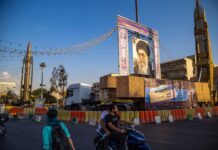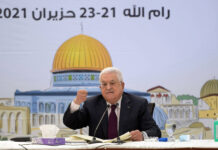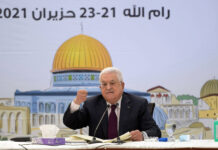The Israeli consensus has been eulogized for the past 50 years.
Comment by By Amotz Asa-El
Overwhelmed in June 1967 by the sudden transition from prewar anxiety to postwar euphoria, Israel had no idea what to do with the vast territories it conquered in the war its neighbors had provoked.
“We should tell the inhabitants of the occupied territories these simple and clear things,” wrote that summer Amos Oz, then a promising, 27-year-old novelist: “We do not want your land … We will sit and rule here until the signing of a peace agreement … The choice will be yours.”
Oz was soon joined by other literati and much of the academic lite. Others, led by Nobel Laureate S.Y. Agnon, poet Natan Alterman, and novelist Moshe Shamir, took the opposite view.
“This victory isn’t only about restoring to the Jews their most ancient and exalted national sanctuaries, the ones that are etched more than anything else in its memory and in the depths of its history,” wrote Alterman, and added: “This victory is about the erasure of the difference between the State of Israel and the Land of Israel.”
That is how the two famous schools of thought, Land for Peace and Greater Israel, came into being. The clash between the two was so intense and protracted that many thought it would tear Israeli society asunder.
Coupled with the tensions between secular and religious Israelis, and differences between Israeli socialists and capitalists, many feared that Israel’s Jews are too split to survive its neighbors’ threats.
They were wrong.
ISRAELI voters gave over the years a chance to both the Greater Israel and Land for Peace schools to execute their policies. The first got its chance in the 1980s, when a Likud-led government built most of the West Bank settlements, and the second got its chance the following decade, when a Labor-led government signed the Oslo Accords.
Both experiments were followed by the massive Palestinian violence of the first and second Intifadas, out of which most Israelis emerged disillusioned about the Palestinian willingness to make peace with the Jewish state.
“to make concessions for peace”
Now a new Israeli consensus emerged, for the first time since 1967. Most Israelis, it turned out, are prepared to make concessions for peace when faced with peacemakers, but when faced with enemies they will fight. This became particularly apparent during the Battle of Jenin in spring 2002, when more reserve paratroopers turned out for the expected showdown with the suicide bombers than the number of troops that the IDF enlisted.
At its root, this consensus has always been there. That is why even a super-hawk line Menachem Begin, when faced with a man of peace like Anwar Sadat, struck the ultimate land-for-peace deal. And that is why in 1967, when faced with a man of war like Gamal Abdel Nasser, even a dove like then-prime minister Levi Eshkol went to war.
Similarly, the pragmatic mainstream demanded last decade an anti-terror fence, despite opposition from both Shimon Peres and Ariel Sharon – one because he feared the fence would compromise his Peace Now vision, and the other because he thought it would compromise his Greater Israel vision.
In the same spirit, there is an Israeli consensus concerning religious affairs.
TRUE, some Israelis are ultra-Orthodox, some are modern-Orthodox, and most are secular. However, 90 percent of Israeli Jews observe the Passover Seder, 60 percent fast on Yom Kippur, 70 percent keep kosher, 94 percent circumcise their boys, and 66 percent hold a Sabbath meal and say its special prayer, the Kiddush.
That means Israelis are overwhelmingly traditional.
At the same time, the ultra-Orthodox population that once opposed Zionism and shunned the secular workplace, now produces annually 2,500 soldiers, and also sends thousands of its young men and women to earn secular professions. In doing so, they, too, are joining the Israeli consensus.
Finally, a third dimension emerged in the Israeli consensus – the economy.
After having been founded by socialists, Israel ultimately steered to capitalism, after having been plagued by hyperinflation and reached the brink of bankruptcy. The transition was so sharp that eventually even most kibbutzim were privatized.
However, Israel’s economic reformers stopped short of dismantling its elaborate social safety network, and the healthcare system which is one of the most egalitarian and comprehensive in the world.
“a compassionate capitalism”
On this front, the Israeli consensus is to seek a compassionate capitalism, one that lets private enterprise thrive, but at the same time seeks justice for the underprivileged and opportunity for the poor.
This June, as European media mark the Six Day War’s fiftieth anniversary, many will lament it as the moment the Israeli consensus died. Well that was true in 1967, but since 2000 the Israeli consensus has gradually resurrected.
That is an accomplishment in any event, but even more so when compared with the crises of national identity and social solidarity plaguing European countries from Ukraine to Belgium, not to mention the multiple civil wars across the Arab world.
- The suicide bomber de-mystified - 13. November 2018
- 3 Jahre nach den Paris-Attacken: Die Entmystifizierung des Selbstmord-Attentäters - 13. November 2018
- Das Wunder der Auferstehung der Hebräischen Sprache - 4. Oktober 2018































